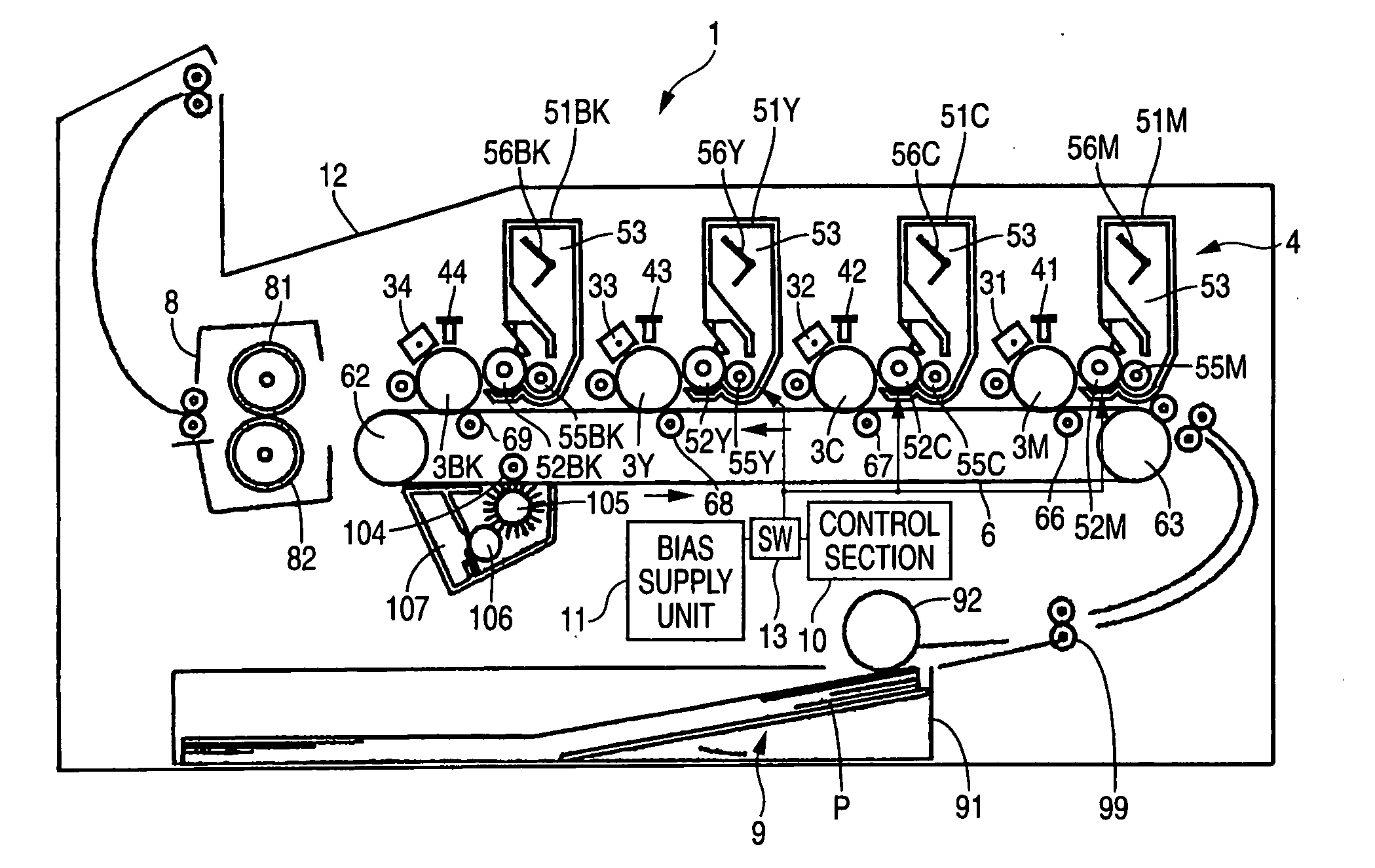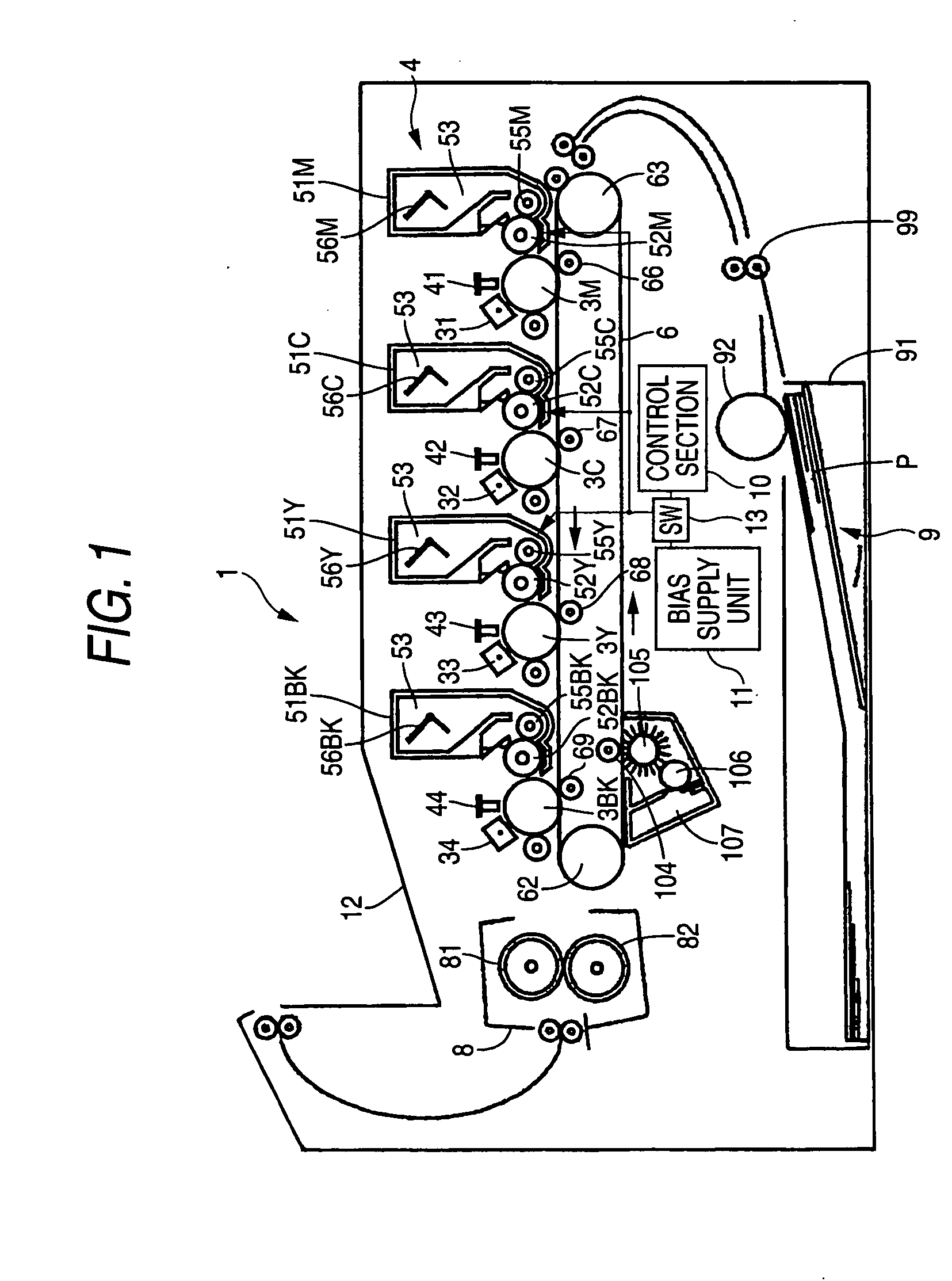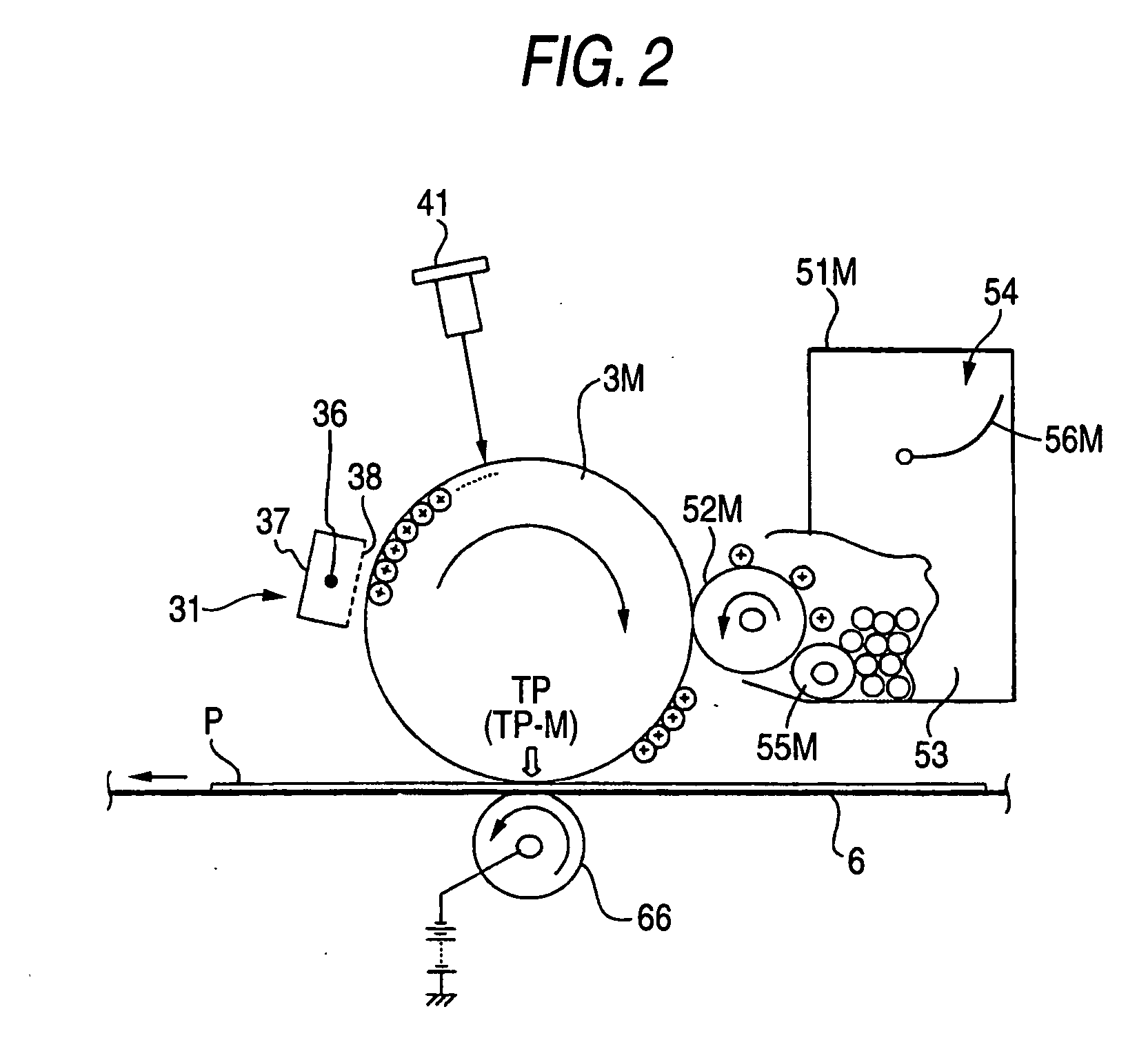Image forming apparatus
a technology of forming apparatus and forming chamber, which is applied in the direction of electrographic process apparatus, instruments, optics, etc., can solve the problems of so-called background fog, and achieve the effect of preventing the occurrence of mixing of colors or background fog, high agitation capability, and high agitation capability
- Summary
- Abstract
- Description
- Claims
- Application Information
AI Technical Summary
Benefits of technology
Problems solved by technology
Method used
Image
Examples
first embodiment
[0051] A first embodiment of the present invention will be described with reference to FIGS. 1 to 4.
[0052] 1. Configuration of a color laser printer
[0053]FIG. 1 is a side cross-sectional view showing a diagrammatic configuration of a color laser printer 1 serving as an image forming apparatus to which the present invention is applied. As shown in FIG. 1, the color laser printer 1 (image forming apparatus) of the present embodiment includes a visible-image-forming section 4; a paper transport belt 6; a fixing section 8; a paper-feeding section 9; a stacker 12; a control section 10; and a bias supply unit 11. Toner images of four colors (images formed by use of a developing agent) corresponding to the image data input from the outside are sequentially formed on the paper P (a transfer-target material, a recording medium), whereby a multicolor image is formed.
[0054] (1) Visible-Image-Forming Section
[0055] The visible-image-forming section 4 includes four development units 51 (51M, ...
second embodiment
[0114]FIGS. 5 and 6 show a second embodiment (corresponding to inventions of claims 2 and 7). A difference between the first and second embodiments lies in the method for improving recovery capability and a method for determining whether or not the recovery capability improvement operation is to be performed. In other respects, the second embodiment is analogous to the first embodiment. Consequently, those reference numerals which are the same as those of the first embodiment are assigned to elements of the second embodiment, and their repeated explanations are omitted. Only a difference between the first and second embodiments will now be described.
[0115] In the embodiment, recovery capability is changed by changing a nip width N (a contact width of the feeding roller 55 in the rotational direction thereof) where the development roller 52 and the feeding roller 55 come in contact with each other. Specifically, as shown in FIG. 5, the rotary shafts 55a of the respective feeding rol...
third embodiment
[0124]FIG. 8 is aside cross-sectional view showing a diagrammatic configuration of a color laser printer 1 according to a third embodiment.
[0125] In this embodiment, bias voltages (400 V) of essentially the same levels are applied to the respective development rollers 52 and the respective feeding rollers 55. Accordingly, the respective feeding rollers 55 supply the toner held in the toner hopper 54 to the development rollers 52 in the nip sections, as well as functioning as the recovery unit which scrape the toner (the waste developing agent) adhering to the surface of the development roller 52 to thus recover the toner into the toner hopper 54.
[0126] In the embodiment, the respective feeding rollers 55 are columnar bodies of the same diameter. The rotational speed (the number of revolutions per unit time) of the feeding roller BK of the fourth development unit 51BK is faster than the rotational speeds of the feeding rollers 55Y to 55C of the first to third development units 51Y ...
PUM
 Login to View More
Login to View More Abstract
Description
Claims
Application Information
 Login to View More
Login to View More - R&D
- Intellectual Property
- Life Sciences
- Materials
- Tech Scout
- Unparalleled Data Quality
- Higher Quality Content
- 60% Fewer Hallucinations
Browse by: Latest US Patents, China's latest patents, Technical Efficacy Thesaurus, Application Domain, Technology Topic, Popular Technical Reports.
© 2025 PatSnap. All rights reserved.Legal|Privacy policy|Modern Slavery Act Transparency Statement|Sitemap|About US| Contact US: help@patsnap.com



